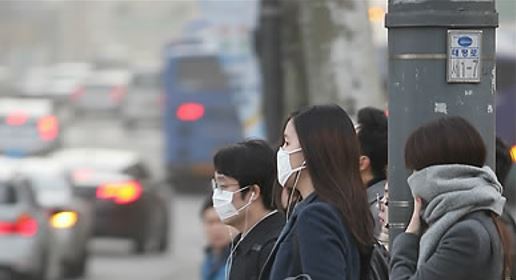 |
People on their way to work in Seoul (Yonhap) |
SEJONG -- The average monthly salary for Korean employees climbed to 3.2 million won ($2,680) as of 2020 on the back of drastic hikes in the statutory minimum wage between 2018 and 2020, state data showed Monday.
According to Statistics Korea, the average monthly wage for salaried workers rose by 430,000 won, or 15.5 percent, in just four years -- from 2.77 million won in 2016.
During the period of 2016-2020, the minimum wage per hour surged by 42.4 percent from 6,030 won to 8,590 won, with the monthly minimum wage rising from 1.26 million won to 1.79 million won under the assumption that the workers had regular full time job status.
In 2020, those paid between 1.5 million to 2.5 million won made up the largest portion at 27.9 percent of total employees. The second-largest portion was those paid between 2.5 million to 3.5 million won at 17.1 percent.
The next on the list were those paid less than 850,000 won at 13.9 percent, followed by those paid between 850,000 won to 1.5 million won at 10.2 percent. Most in these brackets were nonregular employees.
As a noteworthy case, 2.6 percent of all documented workers were paid 10 million won or more a month, and another 2.6 percent between 8 million won and 10 million won. About 4.6 percent were paid between 6.5 million won and 8 million won.
This reportedly marked the first time that the portion of workers whose average monthly wage is 8 million won or over exceeded the 5 percent mark.
There was a gap between those working for conglomerates versus for small and medium-sized enterprises, of 5.29 million won versus 2.59 million, respectively.
By job, the average salary was relatively high among those working for the finance-insurance sector with 6.6 million won, and among those working for foreign-funded companies or institutions with 4.78 million won.
The figures were relatively low among workers in lodging-food services at 1.63 million won, and workers in agriculture-forestry-fisheries.
The payout for men still far outstripped figures for women by 3.71 million won versus 2.47 million won. But it has been found that the gap has narrowed. The ratio of wages for females to males rose from 63.1 percent in 2016 to 66.6 percent in 2020.
Compared to 2019, the growth of wages for men and women posted 3.1 percent and 4.7 percent, respectively, in 2020.
By age, employees in their 40s posted the highest at 3.93 million won, followed by those in their 50s at 3.71 million won, those in their 30s at 3.44 million won and those in their 20s at 2.29 million won and those in their 60s or over at 2.17 million won.
But the on-year growth, compared to 2019, was the highest among those in their over-60s with 4.8 percent.
While the figure for male workers was the highest among those in their 40s at 4.54 million won, the highest among female workers were those in their 30s at 3.04 million won.
The median wage -- for those whose ranking of salary placed center among the total workforce -- rose to 2.42 million won in 2020, from 2.03 million won in 2016.
By Kim Yon-se (
kys@heraldcorp.com)






![[Out of the Shadows] Seoul room clubs offer drugs to compete for clientele](http://res.heraldm.com/phpwas/restmb_idxmake.php?idx=644&simg=/content/image/2024/11/05/20241105050566_0.jpg)

